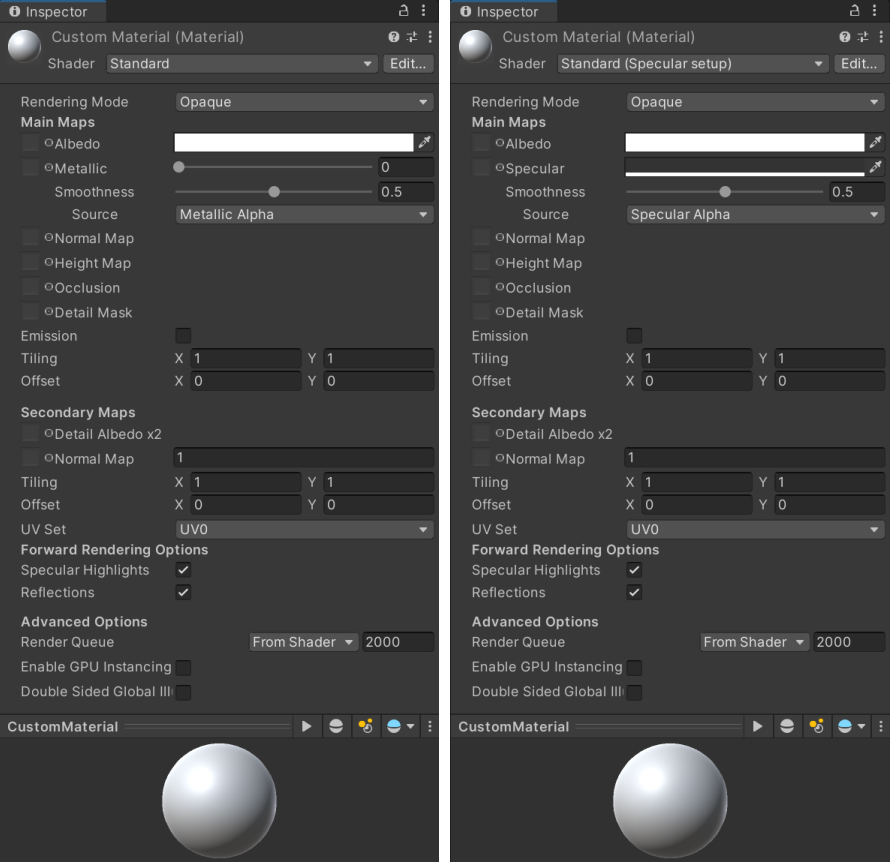Smoothness 平滑度
本文档主要是对Unity官方手册的个人理解与总结(其实以翻译记录为主:>)
仅作为个人学习使用,不得作为商业用途,欢迎转载,并请注明出处。
文章中涉及到的操作都是基于Unity2018.3版本
参考链接:https://docs.unity3d.com/Manual/StandardShaderMaterialParameterSmoothness.html

The smoothness parameter, shown in both Metallic & Specular shader modes.
平滑参数,显示在金属和高光着色模式。
The concept of Smoothness applies to both the Specular workflow and the Metallic workflow, and works in very much the same way in both. By default, without a Metallic or Specular texture map assigned, the smoothness of the material is controlled by a slider. This slider allows you to control the “microsurface detail” or smoothness across a surface.
平滑的概念既适用于高光工作流,也适用于金属工作流,两者的工作方式非常相似。默认情况下,没有指定金属或高光纹理贴图,材质的平滑度由滑块控制。这个滑块允许你控制“微表面细节”或表面的平滑度。
Both shader modes are shown above, because if you choose to use a texture map for the Metallic or Specular parameter, the moothness values are taken from that same map. This is explained in further detail down the page.
这两种渲染模式都显示在上面,因为如果你选择使用纹理贴图作为金属或高光参数,平滑值是从相同的贴图中获取的。这将在后面的页面中详细解释。





 本文档解析Unity Standard Shader中的Smoothness参数,探讨平滑度如何影响材质的微表面细节,以及如何通过纹理贴图控制不同区域的平滑效果,以实现更真实的材质表现。
本文档解析Unity Standard Shader中的Smoothness参数,探讨平滑度如何影响材质的微表面细节,以及如何通过纹理贴图控制不同区域的平滑效果,以实现更真实的材质表现。
 最低0.47元/天 解锁文章
最低0.47元/天 解锁文章
















 8393
8393

 被折叠的 条评论
为什么被折叠?
被折叠的 条评论
为什么被折叠?








